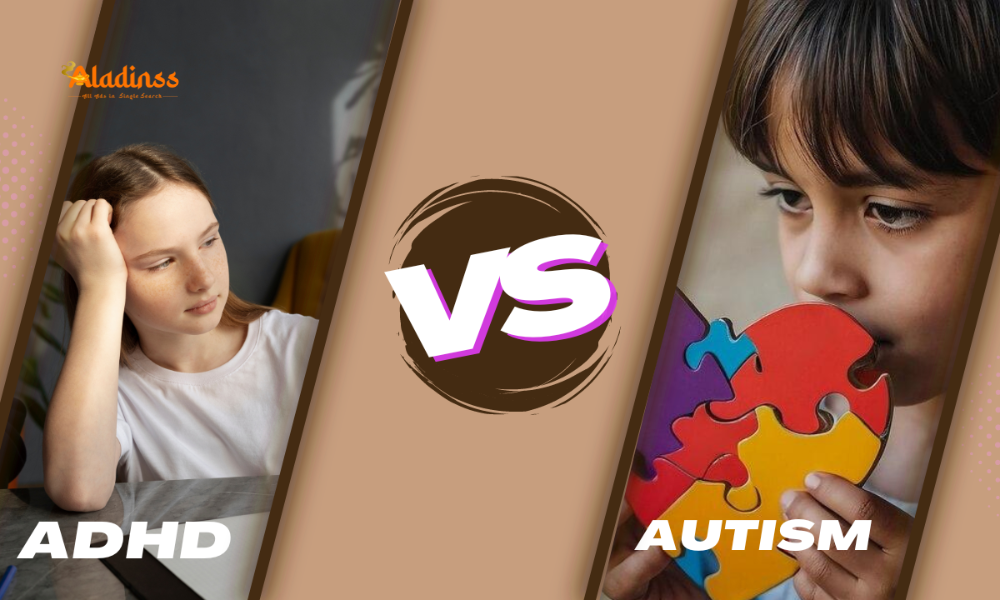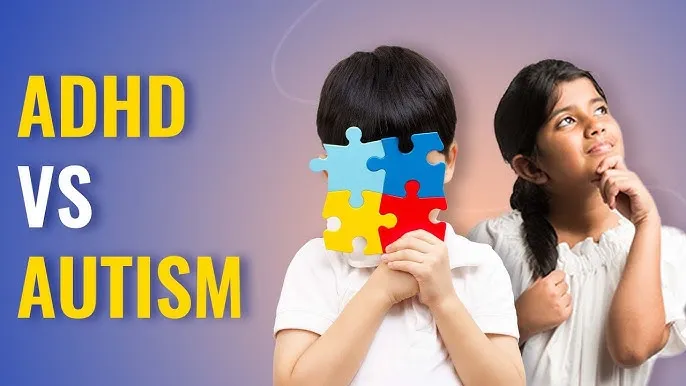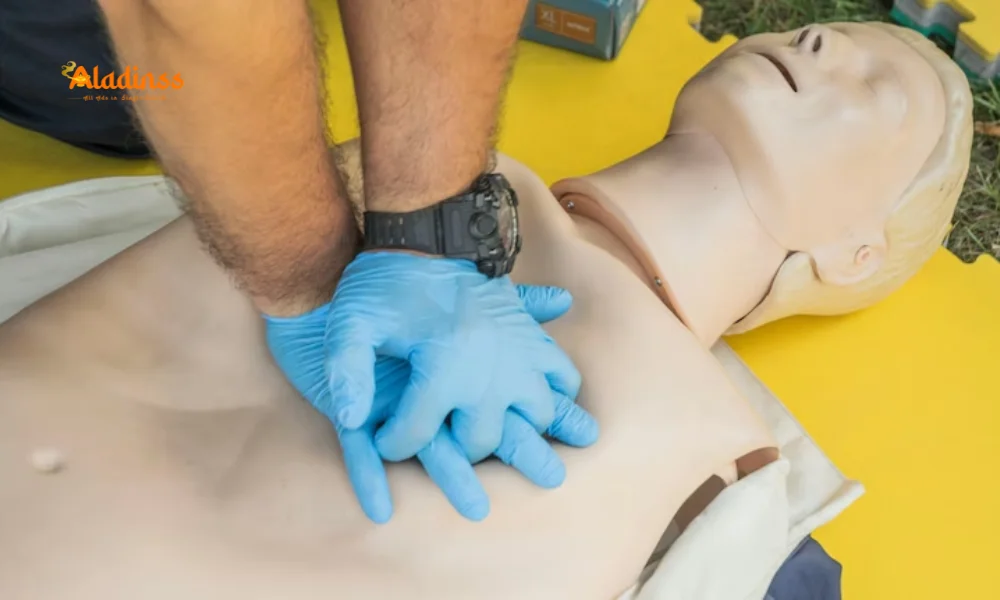Is ADHD a Form of Autism? Expert Shares Key Differences

Is ADHD a Form of Autism? Expert Shares Key Differences
Attention Deficit Hyperactivity Disorder (ADHD) and Autism Spectrum Disorder (ASD) are often misunderstood, with some believing they are closely related or even the same condition. However, while both are neurodevelopmental disorders that affect brain function and development, they are distinct in their symptoms, behaviors, and treatment approaches. To clarify these differences, we consulted Debdutta Roy, a Clinical Psychologist at Insync Child Development Centre in Hyderabad, who provided expert insights into what sets ADHD and autism apart and why understanding these distinctions is critical for effective support.

Understanding ADHD and Autism: The Basics
Both ADHD and autism are classified as neurodevelopmental disorders, meaning they impact how the brain develops and processes information. However, their core characteristics and effects on individuals differ significantly. According to Roy, “ADHD and autism each have distinct diagnostic criteria,” meaning healthcare professionals use specific guidelines to identify each condition. Importantly, it’s possible for a child to have both conditions simultaneously, a situation referred to as comorbidity, or AuDHD.
ADHD, or Attention Deficit Hyperactivity Disorder, is characterized by challenges with inattention, hyperactivity, and impulsivity. Children with ADHD often struggle to focus on a single task, frequently shifting between activities. They may interrupt others, act without thinking, or appear restless. Autism Spectrum Disorder, on the other hand, primarily affects social communication and behavior. Children with autism may have difficulty understanding social cues, exhibit repetitive behaviors, and show intense interests in specific topics.
Core Symptoms of ADHD
ADHD manifests through three primary symptoms: inattention, hyperactivity, and impulsivity. Children with ADHD may find it hard to concentrate on tasks, such as completing homework or following instructions. Their minds often jump from one activity to another, making it challenging to stay organized or finish projects. Hyperactivity can present as constant movement, fidgeting, or an inability to sit still, while impulsivity may lead to interrupting conversations or making hasty decisions without considering consequences.
For example, a child with ADHD might blurt out answers in class or struggle to wait their turn during games. These behaviors can disrupt classroom settings or social interactions, often leading to misunderstandings about the child’s intentions. According to the American Psychiatric Association, ADHD affects approximately 8.4% of children and 2.5% of adults, with boys diagnosed more frequently than girls due to differences in symptom presentation.
Core Symptoms of Autism
Autism Spectrum Disorder is defined by challenges in social communication, repetitive behaviors, and sensory sensitivities. Children with autism may struggle to interpret nonverbal cues, such as facial expressions or tone of voice, making social interactions complex. They may engage in repetitive actions, such as hand-flapping or rocking, and develop intense interests in specific subjects, often focusing on them to the exclusion of others.
Sensory sensitivities are also common, with autistic children often reacting strongly to sounds, lights, or textures. For instance, a loud noise might cause distress, or certain clothing materials might feel unbearable. The Centers for Disease Control and Prevention estimates that 1 in 59 children in the U.S. has been diagnosed with autism, with boys four times more likely to be diagnosed than girls.
Key Differences Between ADHD and Autism
While ADHD and autism share some overlapping traits, such as difficulties with attention and social interactions, their underlying causes and manifestations differ. Roy explains, “The primary difficulties in ADHD are inattention, hyperactivity, and impulsivity, which make it hard for children to sit still or concentrate. In autism, the difficulty is primarily with social skills, repetitive behaviors, and sensory differences.”
For instance, a child with ADHD might struggle to focus during a conversation because their mind is racing, while an autistic child might struggle to understand the conversation’s social nuances. ADHD is often associated with a desire for novelty and spontaneous behavior, whereas autism is linked to a preference for routine and predictability. These contrasting traits can make it challenging to diagnose when both conditions coexist, as the symptoms may mask or amplify each other.
Repetitive Behaviors: A Shared Trait with Different Roots
Repetitive behaviors are seen in both ADHD and autism, but their purposes differ. In ADHD, repetitive actions, such as fidgeting or tapping, often serve as a way to channel excess energy or improve focus. Roy notes, “For children with ADHD, routines can assist in regulating attention.” In contrast, autistic children engage in repetitive behaviors, often called “stimming,” to self-soothe or cope with sensory overload. These might include hand-flapping, rocking, or repeating phrases.
Additionally, children with autism may develop restricted interests, focusing intensely on a single topic, such as trains or dinosaurs, and resist engaging with other subjects. This differs from the scattered attention seen in ADHD, where children may jump between interests without deep fixation.
Social Challenges: Distinct Struggles
Social difficulties are common in both conditions, but the reasons behind them vary. Children with ADHD often miss social cues due to inattention or impulsivity. They might interrupt others or dominate conversations because their minds process multiple stimuli simultaneously. Autistic children, however, struggle with social reciprocity and interpreting nonverbal communication, such as body language or tone. They may also find it hard to express their emotions, leading to misunderstandings in social settings.
For example, a child with ADHD might talk excessively during a group activity, unaware that others are losing interest, while an autistic child might avoid the activity altogether due to discomfort with social interaction. These differences highlight the need for tailored approaches to support social development in each condition.
Treatment Approaches for ADHD and Autism
Treatment for ADHD and autism varies based on their distinct needs. For ADHD, stimulant medications, such as methylphenidate (Ritalin) or amphetamine (Adderall), are commonly prescribed to improve focus and reduce impulsivity. Behavioral therapy and school accommodations, such as extended time for tasks, also play a significant role in managing symptoms.
Autism treatment is more comprehensive, often involving a combination of therapies. Applied Behavior Analysis (ABA) helps address behavioral challenges, while speech therapy improves communication skills. Occupational therapy can assist with sensory sensitivities and daily living skills, and environmental supports, such as quiet spaces, reduce sensory overload. Roy emphasizes, “While therapy is crucial for both, autism treatment is more likely to involve a variety of types of therapy.”
Comorbidity: When ADHD and Autism Coexist
Research indicates that ADHD and autism frequently co-occur, with 50-70% of autistic individuals also showing ADHD symptoms. This comorbidity, often referred to as AuDHD, can complicate diagnosis and treatment. Children with both conditions may experience heightened challenges, such as more severe social difficulties or increased impulsivity, requiring a nuanced approach to care.
For instance, stimulant medications commonly used for ADHD may be less effective or cause more side effects in autistic children, such as irritability or social withdrawal. Clinicians often start with lower doses and closely monitor responses to ensure effective treatment.
Why Understanding the Differences Matters
Distinguishing between ADHD and autism is crucial for providing appropriate support. Misdiagnosis can lead to ineffective interventions, exacerbating challenges for children and their families. Roy highlights, “ADHD children seek novelty and can be impulsive, while autistic children often need routines and sameness.” Tailoring interventions to these needs ensures better outcomes.
For example, a child with ADHD might benefit from a structured yet varied classroom environment, while an autistic child might thrive with consistent routines and sensory-friendly spaces. Parents and educators who understand these differences can advocate for individualized support plans, fostering an environment where children can succeed.
Comment / Reply From
No comments yet. Be the first to comment!






